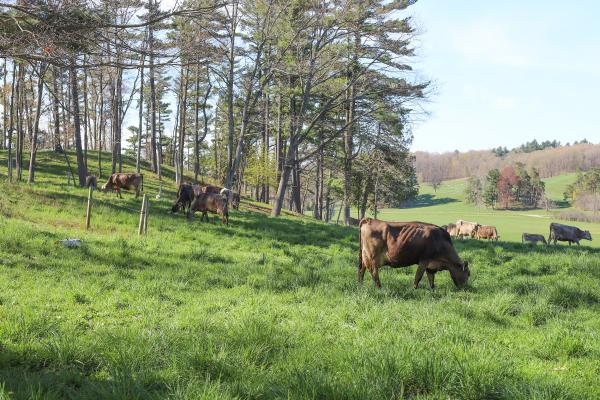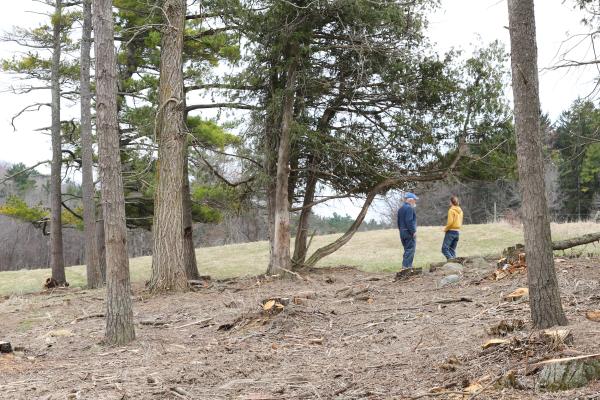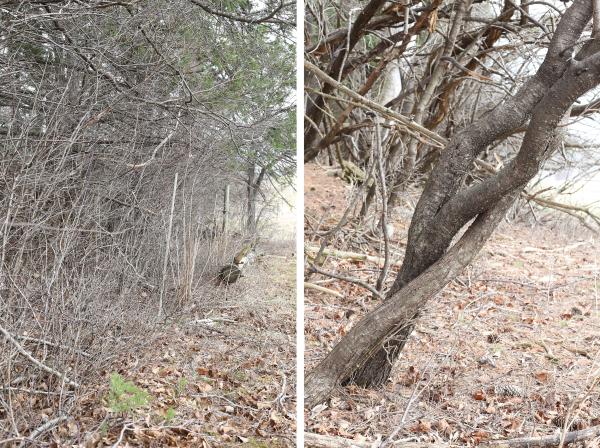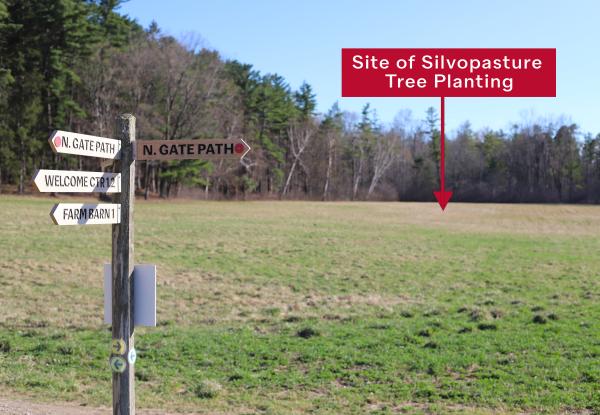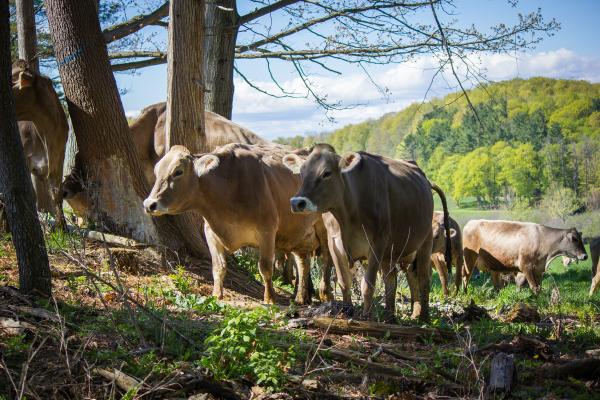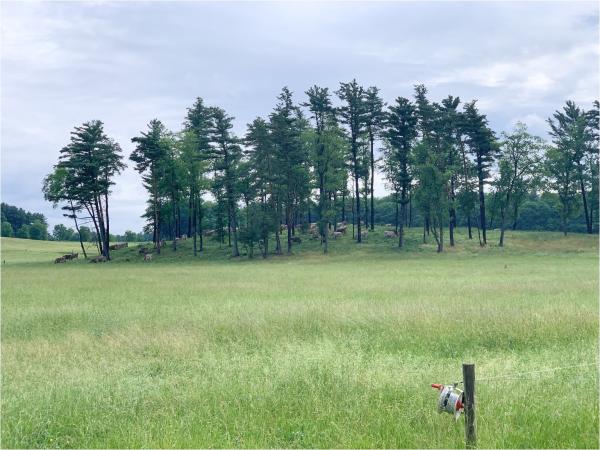This is such good work! It's what I'm trying to do too ( albeit on a smaller scale) Thank you for writing about it so well!
Climate Action at the Dairy: Silvopasture
We believe that animals play an essential role in sustainable farming systems. They can generate food for people from land unsuitable for crops–like much of the sloping, stony acreage at Shelburne Farms, and they can help build healthy soils that sequester carbon and boost the yields of pastures and cropland. We also recognize that current global livestock and meat production generates perhaps 20% of greenhouse gas emissions, according to some studies.
We are working to understand how pasture-based systems like ours stack up against this number, and what we can do to help feed our community and mitigate climate change. To start, we are pursuing three strategies at our dairy that will help us achieve “net zero” carbon status organization-wide by 2028. Those three strategies are silvopasture, biochar, and feed additives. Here’s the story of silvopasture.
Silvopasture
Silvopasturing is the practice of combining trees, pastures, and livestock. (Silvo is latin for “forest”). If you think of savannah-like landscapes, you’re on the right track, though it can also involve hedgerows or crop trees.
Silvopasture is both a climate solution strategy and a resiliency strategy. Because of the carbon that silvopasture can sequester both above ground and below in the soil, Drawdown ranks it #9 in the top 100 solutions to climate change. And as our summers warm, silvopasture trees can offer our cows soothing shade, or shelter from extreme weather. The trees, in turn, benefit from the nutrients in the cows’ manure. And we all benefit from silvopasture’s strong water-retention properties.
For all these reasons, pursuing silvopasture on our farm definitely makes sense. So how do you do it? There are basically two approaches: Create pasture under existing trees, or plant trees in existing pasture. We’re doing both.
Over the past several years, we’ve been thinning tree plantations within our pastures – holdovers from the Olmstedian landscape design dating back to the 1890s – to serve as silvopasture. We’ve been mechanically clearing the understory of shrubs, mostly invasive buckthorn and exotic honeysuckle, to create conditions for grasses to grow. The plantations still read as the historic landscape design element that they are, but now cows can pasture under them.
The cows can help with the clearing, too. With access to woodland edges, their browsing can keep smaller woody plants at bay, especially invasives like Buckthorn. Dairy Manager Sam Dixon has noted, “Where cattle have access to areas, the buckthorn does not thrive. It still grows, but it doesn't form an impenetrable mass.”
This spring, we’re experimenting with the second strategy. We’ll be planting a four-acre area of pasture, known as “Upper Elm” with nearly 60 young trees. (If you’re on our walking trails this season, look to your left after you cross the main road before the dairy.)
With guidance and inspiration from Interlace Commons, and in collaboration with Heritage Landscapes on this pilot project, we’ve carefully chosen native tree species that are adaptable, fast growing, non toxic to livestock, and loosely leafy. Think of birch or quaking aspen creating dappled sunlight on the ground below, rather than sugar maples or oaks. We’re aiming for a 35% tree canopy cover across the stand so that pasture plants, trees, and cows can thrive together.
After the young trees are planted, we’ll water and protect them for three years as they establish themselves, before we open the area for grazing. Woodlands Manager Dana Bishop says, “It’ll read more like expanding the woodlands than closing in the pasture.”
But we have lots to learn. “The open question is, how do you maintain silvopastures over time?” asks Sam. As Dana explains, “Cows don’t allow for natural regeneration of trees, so we will need to figure out how these silvopasture plantings will thrive into the future.” Sam is already thinking about responses. “We’ll probably have to fence off areas for a time to keep the cows out,” he suggests. Dana adds, “And we may need to replant on some sort of cycle as the trees mature and are harvested for lumber, firewood, fence posts, etc.”
With those questions in the future, Sam is just pleased to be working these new systems and strategies into our dairy. “It’s been fun doing some investigation and some research,” he says. “It’s really interesting. And it’s an important thing to do. If we want to have livestock agriculture, we have to understand what the impacts are. And do a better job. And that’s a good thing.”
Sources:
Paul Hawken, Drawdown: The Most Comprehensive Plan Ever Proposed to Reverse Global Warming. New York, NY: Penquin Books, 2018.
Greg DeVries, Heritage Landscapes LLC, “SHELBURNE FARMS SILVOPASTURE,” Internal Memo, April 13, 2023.

